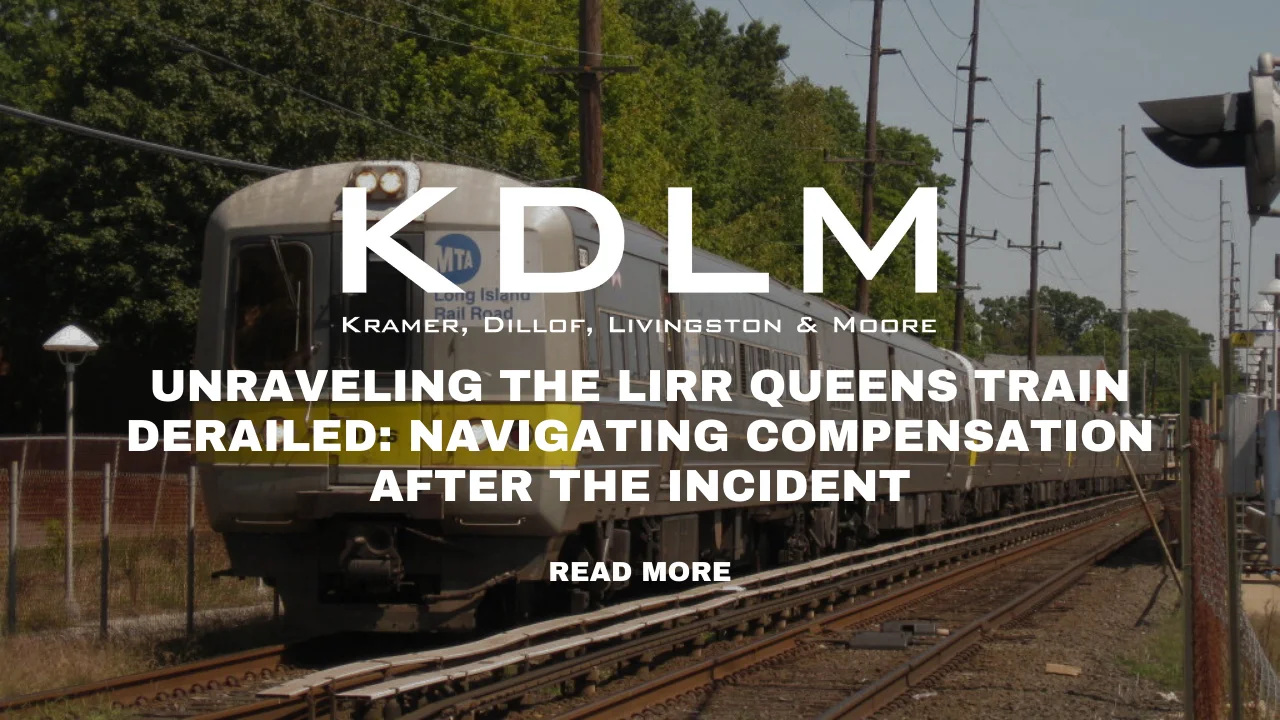In a shocking turn of events, a Long Island Rail Road (LIRR) train derailed in Queens, leaving dozens injured and disrupting the lives of many commuters. This article delves into the details of the incident, explores the possible causes behind the derailment, and discusses the steps that individuals can take to claim compensation for injuries sustained in train accidents. From documenting the accident scene to understanding the legal process, we’ll provide you with essential insights to navigate through the aftermath of the LIRR Queens train derailment.
1. Introduction: Unveiling the LIRR Queens Train Derailment
In a matter that sent shockwaves through Queens and beyond, a Long Island Rail Road (LIRR) train recently derailed near the Jamaica Station complex. This unfortunate incident left dozens of passengers injured and raised questions about the safety and reliability of our rail systems. As news of the derailment spread, commuters and residents were left to grapple with the aftermath highlighting the need for comprehensive compensation mechanisms for those affected.
2. Understanding the Incident: What Led to the Derailment?
As the train derailed just east of the Jamaica Station complex, passengers were left shaken and injured. Despite initial indications that speed was not a factor, investigations are ongoing to determine the exact cause of the incident. Experts are examining various factors, from equipment malfunctions to track issues, in an effort to uncover the truth behind the derailment. The incident has not only disrupted the lives of commuters but also ignited discussions about the safety protocols in place to prevent such occurrences.
3. Documenting the Scene: The Importance of Thorough Evidence
In the chaotic aftermath of a train accident, capturing evidence becomes crucial for those seeking compensation. Documenting the accident scene through photographs and videos can provide valuable insights into the sequence of events and the extent of damages. For victims unable to capture evidence due to injuries, legal professionals can step in to gather essential information from witnesses and bystanders, ensuring that critical details are not lost.
4. Deciphering the Cause: Unraveling the Factors Behind the Derailment
Train accidents can result from a myriad of factors, ranging from mechanical failures to human errors. Understanding the cause of the derailment is pivotal, as it influences the legal avenues available to victims seeking compensation. While speed may not have played a role in this instance, exploring potential equipment malfunctions, signal failures, or track issues is crucial to determining liability and pursuing rightful compensation.
5. Legal Expertise: Seeking Professional Assistance in Train Accident Claims
Navigating the legal complexities of a train accident claim requires specialized expertise. Enlisting the services of an attorney experienced in train accident cases can provide victims with the guidance and support needed to navigate through the intricacies of the legal process. With their knowledge, victims can make informed decisions about their rights, options, and the steps to take to secure the compensation they deserve.
6. Proving Negligence: Building a Strong Case for Compensation
Central to many train accident lawsuits is the concept of negligence. To succeed in a negligence claim, victims must establish that the party responsible for the accident breached their duty of care, directly leading to the injuries sustained. This involves showcasing the owed duty, breach, causation, and resulting harm, providing a comprehensive narrative that supports the claim for compensation.
7. Lessons Learned: The Importance of Safety and Maintenance
The LIRR Queens train derailment serves as a stark reminder of the critical importance of safety and maintenance within our rail systems. As commuters and residents demand answers, there is a renewed call for rigorous safety protocols, regular inspections, and prompt maintenance to prevent future accidents. The incident underscores the shared responsibility of railway authorities and regulatory bodies to ensure the well-being of passengers and the public.
8. Restoring Normalcy: MTA’s Efforts to Resume Full Service
Following the derailment, the Metropolitan Transportation Authority (MTA) swiftly responded to remove the derailed cars and begin the process of restoring normalcy. However, the extensive damage to the tracks and infrastructure necessitated a comprehensive restoration effort. As commuters faced disruptions and delays, the MTA worked tirelessly to resume full service, highlighting the organization’s commitment to passenger safety and convenience.
9. Conclusion: Empowering Victims of Train Accidents
The LIRR Queens train derailment stands as a stark reminder of the unpredictability of accidents and the profound impact they can have on individuals and communities. For victims seeking compensation after such incidents, understanding the legal process and their rights is paramount. By documenting the scene, uncovering the cause, enlisting legal expertise, and navigating settlement negotiations, victims can empower themselves to secure the compensation they rightfully deserve. As we reflect on the lessons learned from this incident, it is clear that a collective commitment to safety, maintenance, and passenger well-being is essential to prevent future tragedies on our rail systems.
Bullet Point Summary:
– Document the accident scene through photos and videos.
– Understand the cause of the derailment for targeted legal claims.
– Seek specialized legal assistance for guidance and support.
– Prove negligence by demonstrating breach of duty and harm caused.
– Engage in settlement negotiations for fair compensation.
– Emphasize safety and maintenance to prevent future accidents.
– Recognize MTA’s efforts in restoring normalcy after the incident.
Remember, your rights matter, and pursuing compensation is a step toward ensuring justice in the aftermath of a train accident.

